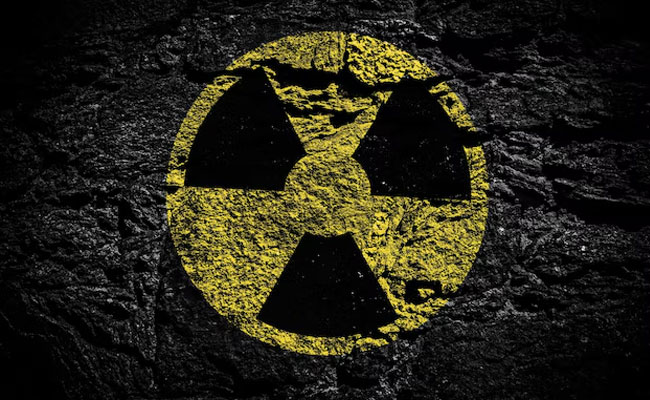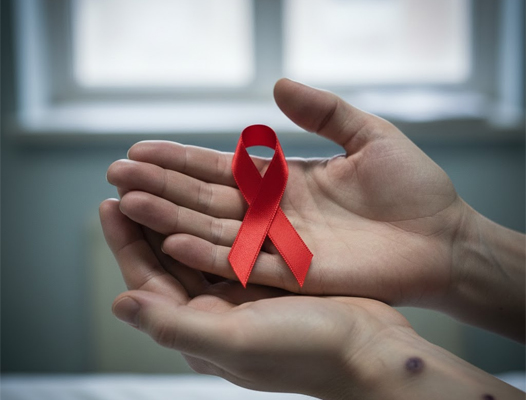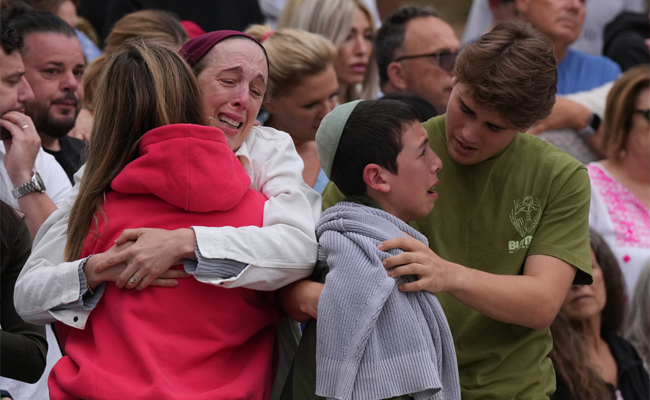The global nuclear weapons landscape has seen notable escalations since the release of Fair Observer’s comprehensive report in November 2024. As of June 23, 2025, several nations have either advanced their nuclear programs or reignited debates over acquiring such capabilities, pushing the world closer to a potential new arms race.
Iran Approaching the Nuclear Threshold
Following Israel's October 2024 strike on Iranian energy facilities, Tehran vowed retaliation using “all available tools,” raising alarms over its nuclear ambitions. As of June 2025, Iran's nuclear breakout time—i.e., the time required to develop a nuclear weapon—is now estimated to be in days or weeks, according to multiple intelligence assessments. While Iran has not officially weaponized its nuclear material, the International Atomic Energy Agency (IAEA) has noted serious gaps in monitoring and transparency.
Iran reportedly holds around nine tonnes of enriched uranium at 60% purity, enough to produce several nuclear weapons if it chooses to do so. While some Israeli strikes in June 2025 targeted facilities in Natanz and Arak, temporarily slowing progress, intelligence reports from both the U.S. and Israel suggest that Iran could still produce a bomb within two to four weeks if the decision is made.
The United States and NATO
The United States has continued its nuclear modernization programme, increasing deployments across NATO territories. Reports also suggest that the U.S. is extending its strategic nuclear umbrella to regions like Taiwan, amid growing tensions with China. In 2024 alone, nuclear-armed countries collectively spent over $100 billion on maintaining and upgrading their arsenals, an 11% increase from the previous year.
Russia’s Expanding Arsenal and Posture
Russia has an estimated 5,459 nuclear warheads, of which around 1,718 are deployed on strategic delivery systems. Since suspending its participation in the New Strategic Arms Reduction Treaty (New START) in 2023, Russia has deepened its nuclear partnership with Belarus, where some of its warheads are now stationed.
Moscow has also expanded the scale and frequency of its nuclear military drills, signalling a more assertive posture amid the ongoing war in Ukraine and deteriorating relations with the West.
China's Rapid Nuclear Expansion
China is on a fast track to significantly boost its nuclear capabilities. As of mid-2025, it possesses between 600 and 660 operational warheads and is expected to cross the 1,000 mark by 2030. Beijing’s nuclear cooperation with Russia, and its quiet engagements with Iran, suggest a broader strategy to challenge U.S. dominance and reshape global deterrence dynamics.
Other Declared Nuclear States
United Kingdom: Estimated to maintain around 225 to 260 active warheads.
France: Possesses approximately 290 warheads, with an independent deterrent capability.
India: Holds between 90 and 110 warheads; expected to increase its stockpile to 150–270 in the coming years.
Pakistan: Estimated arsenal of around 170 warheads, with continued advancements in delivery systems.
Israel: Remains undeclared but is widely believed to possess 80 to 90 nuclear weapons and maintains a policy of strategic ambiguity.
North Korea: Estimated to have fewer than 50 nuclear weapons; continues to conduct tests and refine missile delivery systems.
Emerging Proliferation Hotspots
Middle East
Iran's progress has raised fears of a nuclear arms race in the region. Saudi Arabia has long maintained a security partnership with Pakistan, and officials have hinted at acquiring a bomb if Iran succeeds. Turkey, which already hosts U.S. nuclear weapons under NATO, has also expressed interest in developing its own arsenal, with growing nuclear energy cooperation with Russia potentially providing the technical pathway.
East Asia
South Korea’s public support for developing nuclear weapons has risen to over 70%, especially after North Korea’s recent provocations and the collapse of reunification hopes in early 2024. Japan’s nuclear breakout time remains within months, although strong public sentiment against nuclear arms, rooted in the memory of Hiroshima and Nagasaki, has kept its weapons programme dormant for now.
Taiwan’s nuclear past has resurfaced in debates, especially after questions were raised over the strength of U.S. security commitments. While official policy remains against nuclearization, any shift in the regional balance could change that calculus.
Europe
Ukraine’s war with Russia has triggered a fresh debate on nuclear deterrence in Europe. Ukrainian President Volodymyr Zelenskyy recently floated the idea of pursuing nuclear weapons if NATO membership remains elusive. Though the comment was later retracted, the sentiment reflects growing frustration among Ukrainian leadership.
Meanwhile, European leaders, particularly in Germany and France, are discussing the creation of a more independent nuclear deterrent for the continent. Former German Foreign Minister Joschka Fischer and others have openly supported this idea, especially following the re-election of Donald Trump in the U.S. and concerns over NATO’s future cohesion.
Past Lessons and Present Risks
The Non-Proliferation Treaty (NPT), signed in 1968, was instrumental in preventing the widespread spread of nuclear weapons, with several countries like South Africa, Kazakhstan, and Ukraine giving up their arsenals in exchange for security guarantees. However, the collapse of arms control treaties like the INF and the faltering commitment to the Treaty on the Prohibition of Nuclear Weapons (TPNW) indicate weakening global consensus on non-proliferation.
History shows that smaller nations have often supported each other in nuclear development: Israel and South Africa, Saudi Arabia and Pakistan, Argentina and Israel. Such partnerships remain a threat to international stability.
The world today stands at a precarious junction. As geopolitical tensions intensify, more nations are re-evaluating their strategic doctrines. Iran’s nearing breakout capability, North Korea’s continued defiance, and the growing insecurity across Europe and Asia are pushing the global nuclear order toward a new era of brinkmanship.
The collapse of diplomatic agreements and the erosion of trust among major powers have left the world with fewer tools to contain nuclear ambitions. While the declared nuclear states continue to modernize and posture, smaller nations may soon see proliferation not as a taboo, but as a necessity.
This article is based on the Fair Observer report published in November 2024 and updated with the latest developments as of June 23, 2025.
Let the Truth be known. If you read VB and like VB, please be a VB Supporter and Help us deliver the Truth to one and all.
Satna/Bhopal (PTI): Four children suffering from thalassemia have tested HIV positive at Satna District Hospital in Madhya Pradesh allegedly due to contaminated blood transfusions, officials said on Tuesday.
The case is four months old and an investigation is underway into it, an official said.
Officials suspect the use of contaminated needles or blood transfusions for the spread of infection to the children.
ALSO READ: 3 Indian students among those injured in Australia’s Bondi Beach attack
MP Health Minister Rajendra Shukla told reporters in Bhopal that he has ordered a probe into the matter and sought a report.
“It is also being investigated whether the blood transfusion took place in other hospitals also or only in the government hospital,” he said.
The affected children, aged between 12 and 15 years, received blood transfusions from the hospital's blood bank, as per an official.
Devendra Patel, in-charge of the blood bank at Sardar Vallabhbhai Patel District Hospital in Satna, said four children have tested HIV positive and an investigation is underway to determine how they got infected.
"Either an infected needle was used or a blood transfusion occurred. These are the two main reasons I believe. Blood transfusion seems to be the most likely cause," he told PTI Videos.
All these children suffer from thalassemia, and some have received 80 or 100 blood transfusions, he said.
A family member of one of the affected children said that their child was found to be HIV positive during a routine checkup about four months back, and he has been receiving medication, but it had proven to be of no use.
After taking the medication for HIV, the child starts vomiting, feels low and becomes ill, he said.
After the four children were detected with HIV infection, their family members were also tested and the results came out negative, he added.
The Opposition Congress targeted the government over the matter and demanded the resignation of Health Minister Shukla.
Speaking to reporters in Bhopal, Congress MLA and former minister Sachin Yadav claimed such incidents were continuously occurring in Madhya Pradesh.
Earlier, a case of toxic cough syrup came to light in Chhindwara, followed by incidents of rat bites at hospitals in Indore and Satna, and now children have been given HIV-infected blood, he said.
"The health minister is unable to manage the department. He should resign. A murder case should be filed against those responsible for the Satna incident," Yadav said.
Senior Congress leader Sajjan Singh Verma termed it a failure of the government. Chief Minister Mohan Yadav's government has no connection with ground realities, he charged.
"Somewhere rats are roaming in hospitals, somewhere children are being given HIV-infected blood. Instead of preventing HIV, you are spreading it. Mohan Yadav should wake up from his slumber. Children are the nation's heritage and should be taken care of," he added.





